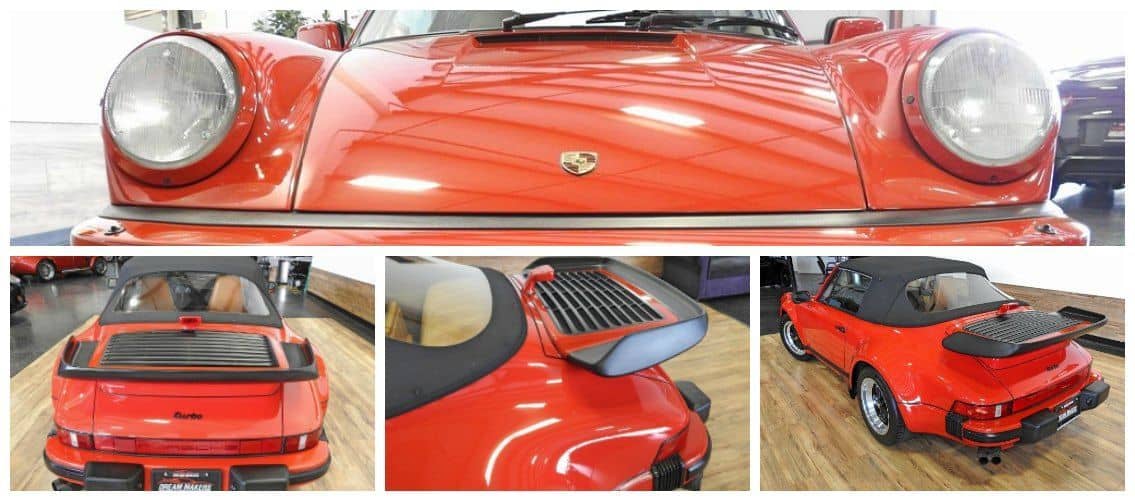1989 Porsche 911 Turbo Type 30
For Throwback Thursday, we’re highlighting one of the 80’s most popular sports cars – the Porsche 911 Turbo Type 30. Our friends at Dream Makers Automotive just happen to have a 1989 model we are drooling over (figuratively of course – #TBTDrool).
Porsche 930 – The Fastest Production Car of Its Time
When Porsche turbo-charge their legendary 911, it kicks the sports car game into high gear. What they learn on the racetrack with their 917/30 Spyder CanAm racer, they soon introduce into their production cars. The 930 (as it is commonly known) becomes the fastest production car of its time when it rolls into showrooms in 1975. Everyone (young or old) wanted one.
Let’s Make It Faster!
When first introduced, the Porsche 930 has a single turbocharged, 3.0L engine producing an incredible 256 hp. In 1978 engineers decide, “Why not make it faster?” so they enlarge the engine size to 3.3L, add an air-to-air intercooler and boost the output to 300 hp. After that, the car is lightweight, wickedly fast and untouchable.
A Whale Tail Only a Yuppie Could Love
Aerodynamics plays a big part in the 930 design. It has a wide body and an iconic rear spoiler, or “whale tail”, that re-directs air flow over the engine while also producing downforce over the rear tires. With a blazing top speed of 150 mph, reliable German engineering and iconic styling, the 930 Turbo is a true status symbol of the 80s. Every yuppie in America has to have one.
Speed Taken Seriously
With great speed comes great responsibility, which is why the 930 is nicknamed of “The Widow Maker”. The lightweight body, rear engine layout and shorter wheelbase makes this car prone to oversteering. Throw in the slight turbo lag when you step on the pedal and the driver is easily caught off guard, fishtailing when the speed kicks in. While today’s Porsches have safety technology to counter this and assist the driver, with the 930, you have to take the speed seriously.

(www.dreammakersautomotive.com)
Can’t Replace the Porsche 930 Turbo
The 930 briefly disappeared from the American market in 1980 when Porsche pulls it due to U.S. emission regulations. The replacement model is the Porsche 928, which suffers from dismal sales and disappointing reviews. The carmaker decides to re-introduce the 930 in 1986 – with an emission-controlled engine that reduces the horsepower to 282.
1989 – The Last Year of Production
The last big change for the 930 is in 1989 when the German automaker offers it with a 5-speed manual transmission. Sadly, it is also to be the last year of production. Porsche decides to close out the era by replacing the 930 with the 964 Turbo.
Get Ready for the Ride of Your Life
Among the last of the air-cooled Porsches, the 930 Turbo is one of the most powerful sports car of its time. A highly sought after classic, this sports car hasn’t lost its bark or its bite in 30 years. Be warned, if you want to take one for a spin, hone your driving skills first. As long as you show it the respect it deserves, the 930 Turbo will give you the ride of your life.
Collector and Classic Car Insurance for Less
Owning a classic Porsche has been a lifelong goal. Now that you’ve achieved it, protect your collector car with the right insurance policy from Classic Auto Insurance. We have customizable plans that fit all your coverage needs. Let our friendly, knowledgeable staff answer any questions you have. Visit our website at www.classicins.com and see how we can help safeguard your dream car.





